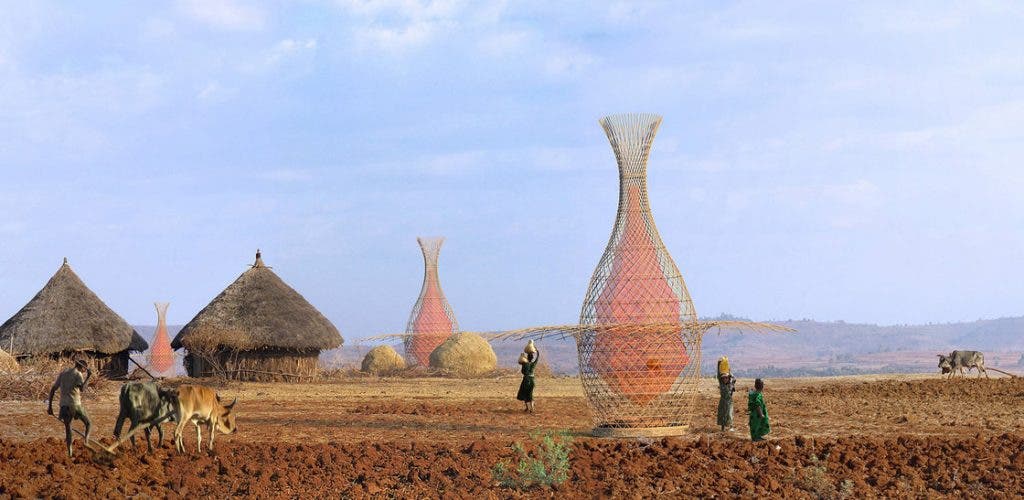Most people would are surprised when they hear that 768 million people don’t have access to clean water. That’s twice and over the population of the US, and 50% more than that of the European Union! Something as simple and basic as access to water is denied (or greatly hardened) for them. Italian designer Arturo Vittori and Swiss architect Andreas Vogler learned this first hand when they visited Ethiopia, where people have to walk miles and miles for clean water.
Vittori and Vogler acknowledged this problem, and, through their firm, Architecture and Vision, have come up with a potential solution: drawing water from thin air. WarkaWater, which is named after an Ethiopian fig tree, is composed of a 30-foot bamboo frame which can be relatively easily and sustainably built, containing a fog-harvesting nylon net that can be easily lowered for repairs and to allow communities to measure the water level. A simple and effective solution.
Now, gathering water from this type of construction is hardly a new idea. MIT researchers have been working in Chile for years trying to find a suitable solution. Peruvians have developed some technologies as well, and the list goes on and on. But so far, the only technologies that have shown some signs of success have been simple, and low maintenance.
This is where WarkaWater could shine – since it’s quite low tech and requires little maintenance, it could be ideal for the harsh environment of the rocky Ethiopian plateau. Each water tower costs $550 if produced individually, and the price could drop significantly if they were mass produced; for this price, it would gather an estimated 26 gallons of drinkable water a day – enough for a family of seven. It also requires limited knowledge from the users.
“Once locals have the necessary know-how, they will be able to teach other villages and communities to build the WarkaWater towers,” says Vittori, who is already working on WarkaWater 2.0, an upgraded version that may include solar panels and LED bulbs to provide light after dark.
The only problem, as usually is money. The two are currently trying to raise funds to start producing these towers in Ethiopia next year. And WarkaWater could also prove useful in other areas, like deserts, where water availability is also a huge problem.







